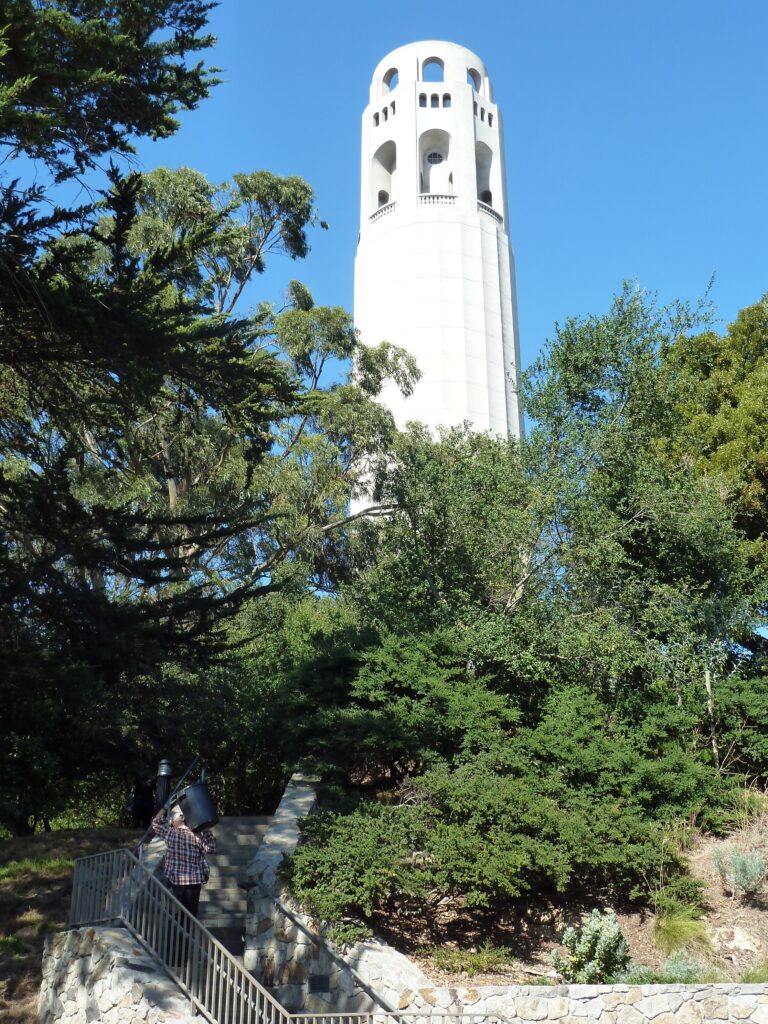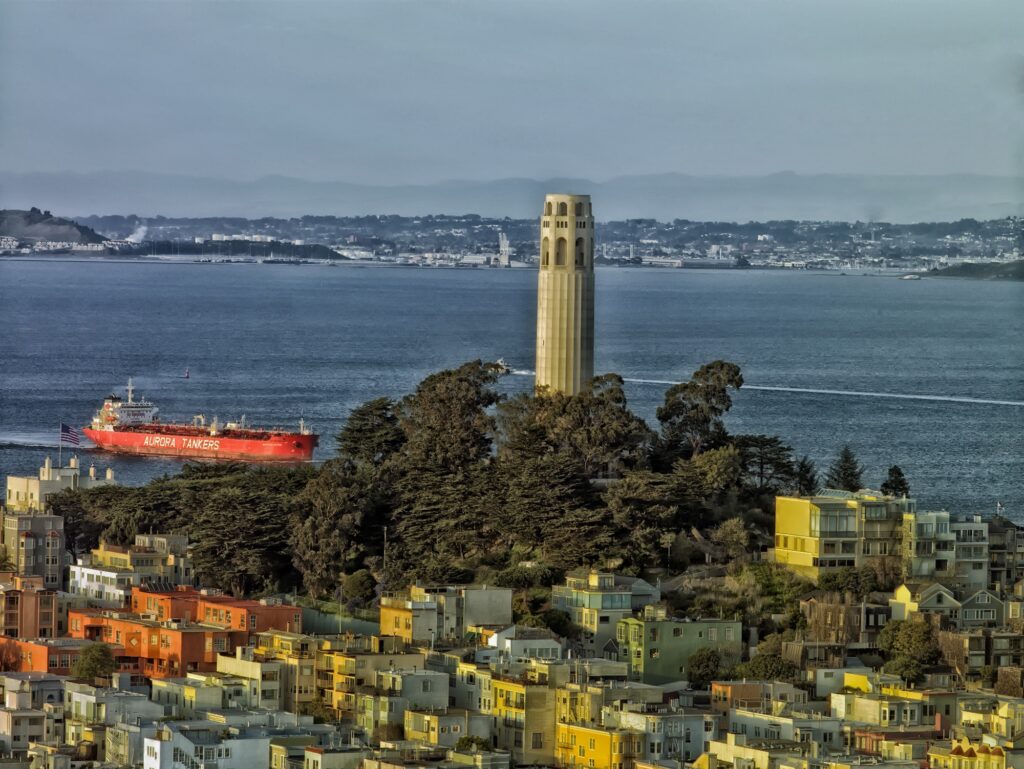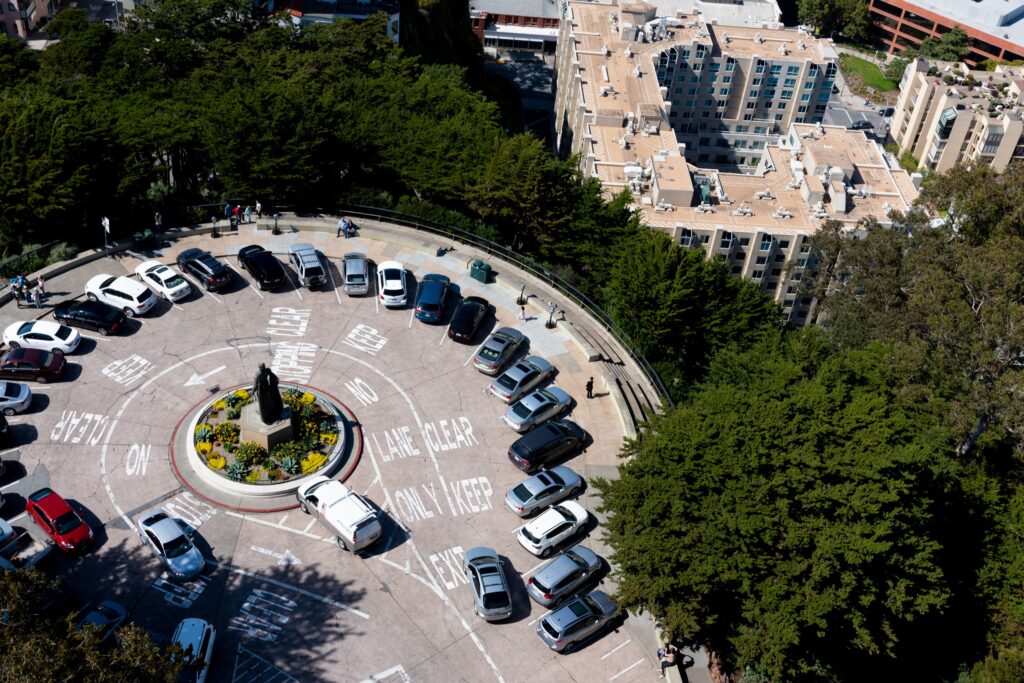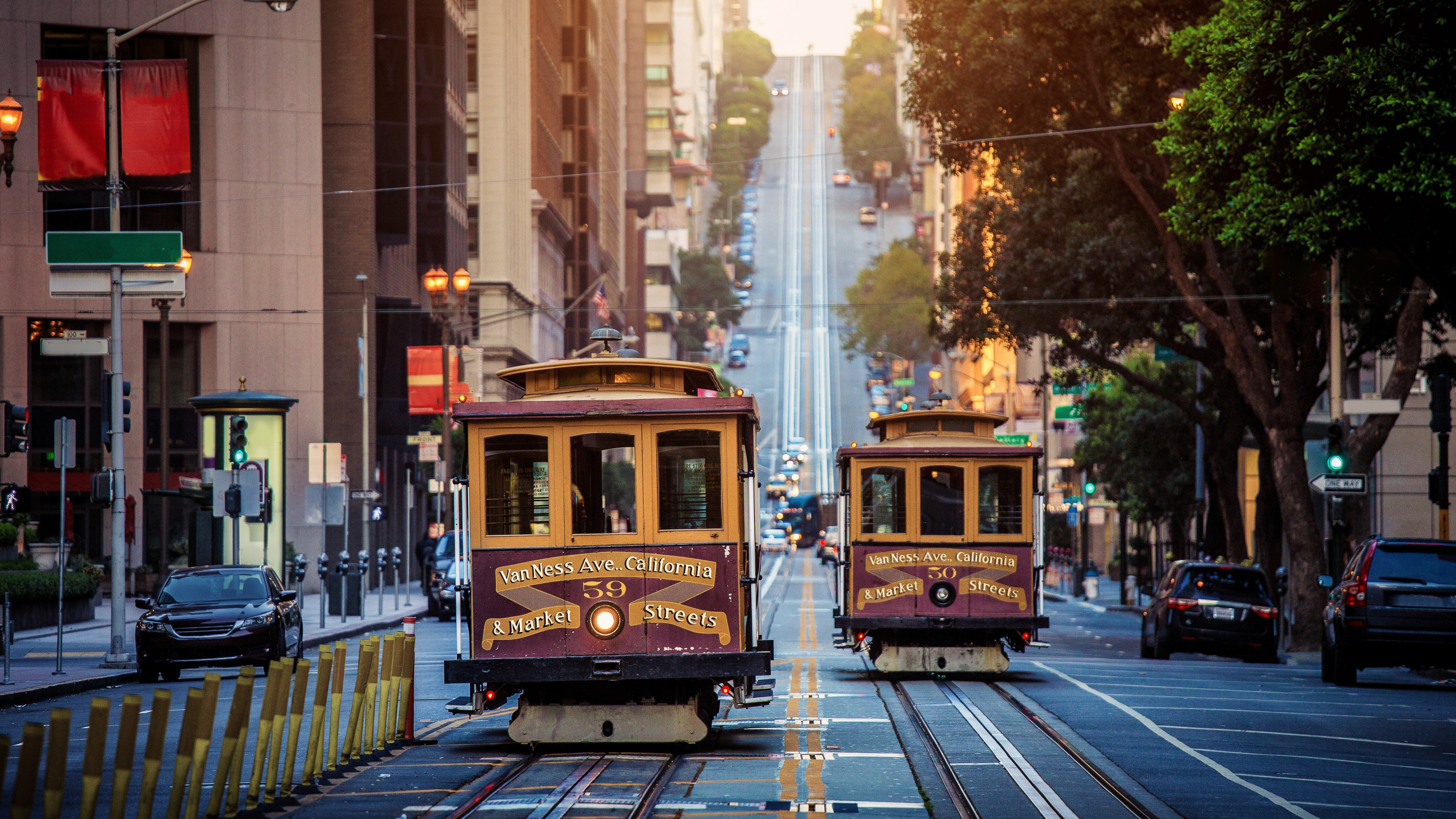Built in 1933 with funds bequeathed by Lillian Hitchcock Coit, the 210-foot tall Coit Tower stands proudly atop Telegraph Hill in San Francisco. This architectural gem, resembling an enormous Roman column, holds a rich history and a unique connection to the city’s volunteer firefighters.
Coit Tower: The Iconic San Franciscan Landmark
Why was Coit Tower Built?
Coit Tower, built in 1933, was a testament to the philanthropy of Lillian Hitchcock Coit, a well-known patroness of San Francisco’s volunteer firefighters. Inspired by her admiration and support for the firefighting community, Lillian bequeathed funds for the tower’s construction in her will. Her connection with the Knickerbocker Engine Company Number Five, dating back to her teenage years, fueled her passion for the project. The tower stands as a lasting tribute to the valiant efforts of volunteer firefighters, embodying Lillian’s commitment to honoring their service.
What is Coit Tower?
Coit Tower is an iconic 210-foot tall structure located atop Telegraph Hill in San Francisco. Designed by architects Arthur Brown Jr. and Henry Howard, the art deco tower is constructed from unpainted reinforced concrete. Its distinctive resemblance to an enormous Roman column and the apocryphal tale of its design mirroring a fire hose nozzle add to its unique charm. The tower houses striking fresco murals depicting the struggles and aspirations of the Great Depression, considered some of the finest examples of Depression-era public art in California. Visitors can explore the lobby for free, with an option to take an elevator to the top for a fee, enjoying panoramic views of San Francisco. Coit Tower, funded by Lillian Hitchcock Coit’s bequest, stands not only as an architectural marvel but also as a testament to the city’s history and the legacy of volunteer firefighters.
Ready to learn more about Coit Tower?
Design and Architecture:
The art deco tower, crafted from unpainted reinforced concrete, was designed by renowned architects Arthur Brown Jr. (also responsible for San Francisco’s City Hall and War Memorial Opera House) and Henry Howard. A fascinating tale, although apocryphal, suggests that the tower’s design mirrors a fire hose nozzle, paying homage to Lillian Hitchcock Coit’s affinity with the volunteer firefighter community.
Fresco Murals:
Step into the lobby of Coit Tower to witness fresco murals painted in 1934, depicting the discontent and hope felt during the Great Depression. Today, these vividly colored murals stand as California’s finest examples of Depression-era public art. While entry to the tower is free, a fee is charged for those eager to take the elevator to the top.

Telegraph Hill & Coit Tower
Coit Tower’s lofty perch atop Telegraph Hill, a distinctive 295-foot elevation, provides a breathtaking view of San Francisco. Telegraph Hill, historically significant for signaling ship arrivals, played a crucial role before the completion of the transcontinental railroad in 1869. Before the completion of the transcontinental railroad in 1869, ships carrying mail, cargo, and loved ones were San Francisco’s primary link to the rest of the U.S.
In 1846 a signal pole was placed atop Telegraph Hill to alert the town when ships approached. Telegraph Hill received its name in 1850 when a semaphore, also called a marine telegraph, was erected to replace the signal pole. The semaphore consisted of a tall mast with movable arms that were positioned in various configurations depending on the type of ship. During the Gold Rush eager residents, alerted by the semaphore, scrambled up the hill to watch paddle-wheeled steamers and clipper ships sail into the bay.

Pioneer Park
Crowning Telegraph Hill is Pioneer Park, established in 1876 to celebrate the United States Centennial. The park’s centerpiece is, of course, Coit Tower. Pioneer Park offers a panoramic aerial view and features an anachronistic bronze statue of Christopher Columbus, a gift from San Francisco’s Italian-American community in 1957.

Lillian Hitchcock Coit
The tower’s namesake, Lillian Hitchcock Coit, was a remarkable and well-known patroness of San Francisco’s volunteer firefighters. Known for her eccentricities, such as dressing in male drag to infiltrate male-only establishments, Lillian Hitchcock Coit was an avid gambler and cigar smoker.
Before 1866, there was no city fire department, and the fires in the city that broke out were extinguished by several volunteer fire companies. At the age of fifteen, she witnessed the Knickerbocker Engine Company Number Five responding to a fire atop Telegraph Hill. Seeing that the Knickerbocker Company was shorthanded, she through her schoolbooks to the ground and helped, calling out to bystanders to help get the engine up the hill. After that, Lillian became the Knickerbocker Engine Companies mascot.

http://www.protectcoittower.org/about_lillie_hitchcock_coit
When the Knickerbocker Engine Company Number Five made Lillian an honorary member, she took to signing her name Lillie Hitchcock Coit Knickerbocker. She died in 1929, at the age of eighty-six, leaving a $118,000 bequest to build a tower in honor of her firefighting friends.
Discover the captivating Coit Tower history in San Francisco, where architectural brilliance, Depression-era art, and the spirit of volunteer firefighters converge. Plan your visit to this iconic landmark and delve into the stories that have shaped its legacy.
To hear more stories, subscribe here.
Explore More Blog Posts
10 Must See SF Tourist Attractions to Visit

Whether you’re interested in breathtaking views, diverse cultures, or exploring urban parks, our guide has you covered. Don’t miss out on these must-see attractions!
San Francisco Hotel Guide: Boutique, Romantic, and B&B Gems

Welcome to our friendly San Francisco Hotel Guide. We’re here to showcase the most charming San Francisco boutique hotels, romantic escapes, and cozy bed-and-breakfasts. San Francisco is a city of diverse neighborhoods, each with its own unique character and charm. Whether you’re planning a romantic weekend, a solo retreat, or a unique business trip, we’ve…
A Day Trip to Napa Valley: Your Perfect Getaway

For those seeking an escape from the hustle of city life, a day trip to Napa offers the perfect solution. Imagine a day filled with breathtaking scenery, exquisite wines, and the company of fellow enthusiasts. Join Gray Line San Francisco on an adventure to explore the renowned wineries of Napa Valley. Explore the illustrious Roche…
Unlocking the Best of San Francisco in Summer

San Francisco, nestled by the bay, beckons with its timeless landmarks, diverse culture, and electrifying energy, promising a summer brimming with unforgettable adventures. Bask in the delightful sunshine that graces SF during these months. Whether you call this city home or are just passing through, let this guide be your compass to discover the finest…